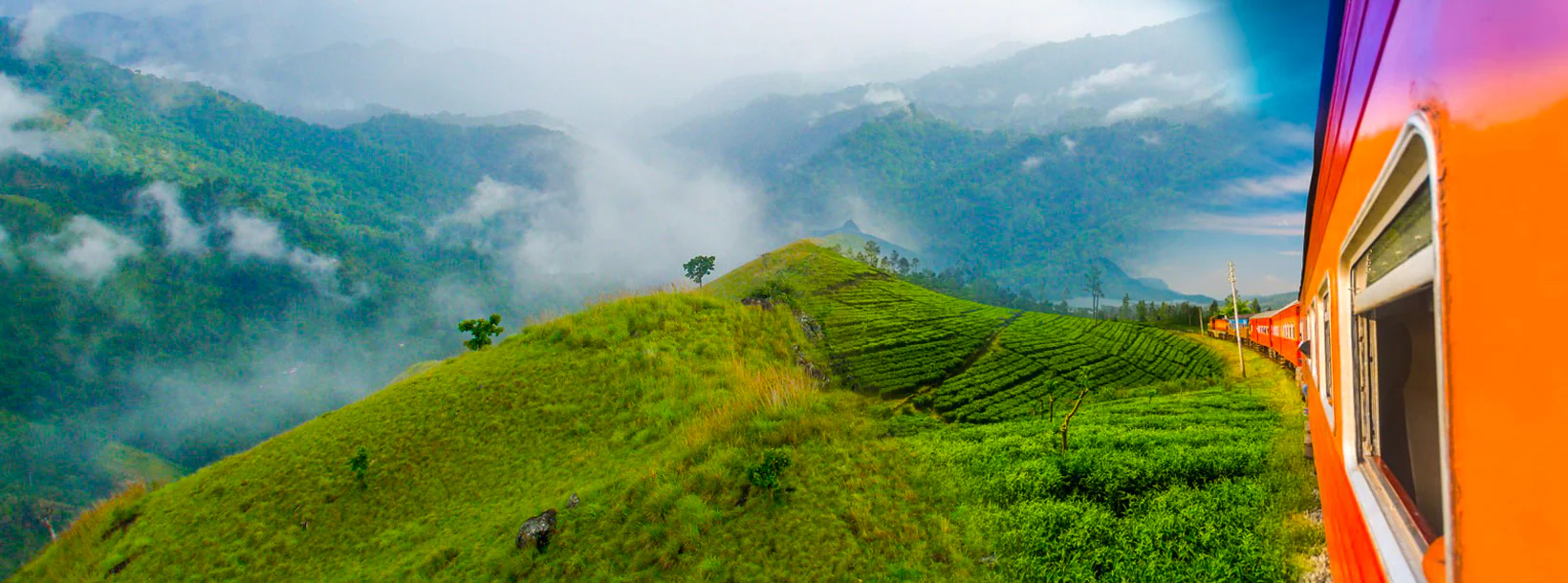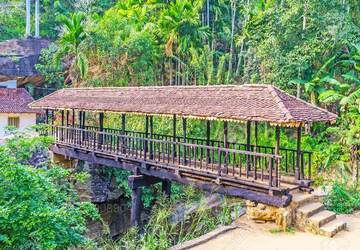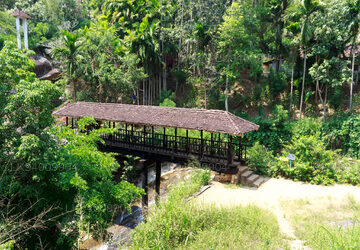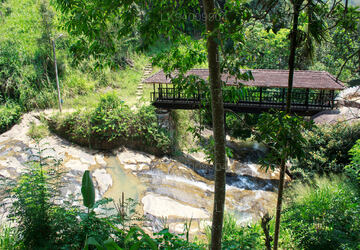
Badulla City
Badulla: Scenic town in Sri Lanka's hill country, surrounded by lush tea plantations and offering picturesque landscapes, waterfalls, and cultural sites.
Bogoda-Holzbrücke
Die Bogoda-Holzbrücke wurde im 16. Jahrhundert während der Dambadeniya- Ära erbaut. Dies soll die älteste erhaltene Holzbrücke in Sri Lanka sein. Die Brücke liegt 7 Kilometer westlich von Badulla . Alle Teile dieser Brücke wurden aus Holz gefertigt, einschließlich der Verwendung von Holznägeln als Befestigungsmaterial. Die Dachziegel zeigen den Einfluss des Königreichs Kandy. Die Brücke wurde über die Gallanda Oya gebaut, die Badulla und Kandy auf einer alten Route verband.
Die Bogoda-Brücke ist über 400 Jahre alt und vollständig aus Holzbrettern gebaut, die angeblich von einem einzigen Baum stammen. Es handelt sich um eine exklusive Konstruktion, da sie über eine 2,4 Meter (7,9 Fuß) hohe Ziegeldachkonstruktion über ihre gesamte Spannweite von fast 15 Metern (49 Fuß) Länge und 1,5 Meter (4,9 Fuß) Breite verfügt. Die Holzzäune der Brücke sind in verschiedenen antiken Mustern verziert und wurden auf beiden Seiten errichtet.
Die Struktur der Brücke steht auf einem riesigen, 11 Meter hohen Baumstamm. Als Konstruktionsmaterial für die Brücke wurden hauptsächlich Jackfruchtstämme (Artocarpus heterophyllus) und Kumbuk-Stämme (Terminalia arjuna) verwendet. Darüber hinaus wurden für die Holzdekorationen Kaluwara-Holz (Diospyros ebenum) und Milla-Holz verwendet.
Der buddhistische Tempel von Bogoda ist ein alter Tempel neben der Holzbrücke von Bogoda. Der Tempel hat eine viel längere Geschichte als die Brücke. Es stammt aus dem 1. Jahrhundert v. Chr., aus der Zeit der Anuradhapura- Ära. Der Tempel wurde nach den Anweisungen von König Valagamba erbaut. Die Steininschrift neben dem Tempel in Brahmanenschrift besagt, dass der Tempel von Tissa, einem Provinzführer in Badulla, einem Priester namens Brahmadatta gespendet wurde.
Im Inneren des Tempels befanden sich kunstvolle, schöne Gemälde, die an die Kandyan-Ära erinnern. Die Wände wurden mit einer Paste aus Watte, Bienenhonig und extrahiertem und gereinigtem weißem Ton errichtet. Die Gemälde wurden an diese Wände gemalt.
Am 27. Mai 2011 gab die Sri Lanka Post einen Rs. Briefmarke 15 mit einem Foto der Brücke, als Teil einer Briefmarkenserie zum Gedenken an Brücken und Durchlässe in Sri Lanka.
Special places in Badulla
-
 Muthiyangana Raja Maha Vihara
Muthiyangana Raja Maha ViharaMuthiyanganaya Raja Maha Viharaya lies in the centre of the city of Badulla. The History of this temple goes back to the time of Buddha but this area around Badulla goes way back in to the time of 19th -18th century BCE.
-
 Dowa Raja Maha Viharaya
Dowa Raja Maha ViharayaDowa Raja Maha Viharaya (Dowa Cape Temple) lies few kilometres away from the Bandarawela town on the Bandarawela – Badulla Road. This temple is thought to be done by King Walagamba in the in first century BC.
-
 Bogoda Wooden Bridge
Bogoda Wooden BridgeThe Bogoda Wooden Bridge was built in the 16th century during the Dambadeniya era. This is said to be the oldest surviving wooden bridge in Sri Lanka. The bridge is situated at 7 kilometres (4.3 mi) west of Badulla.
-
 Dunhinda Falls
Dunhinda FallsDunhinda Falls is situated about 5 km away from Badulla town. It is 63 meters high and is considered to be one of the most beautiful waterfalls in Sri Lanka. The falls gets its name dew to the smoky dew drops spray.
About Badulla District
Badulla is the capital of Uva Province in Sri Lanka. Badulla is located on the southeast of Kandy, almost encircled by the Badulu Oya , about 680 meters (2200 ft) above sea level and is surrounded by tea plantations. The town is overshadowed by the Namunukula range of mountains. Badulla is about 230km away from Colombo towards the eastern slopes of central hills of Sri Lanka.
Badulla and surroundings are highly recommended for eco-tourists as Horton Plains National Park and the Knuckles mountains are few hours away.
About Uva Province
The Uva Province is Sri Lanka's second least populated province, with 1,187,335 people, created in 1896. It consists of two districts called Badulla and Moneragala The provincial capital is Badulla. Uva is bordered by Eastern, Southern and Central provinces. Its major tourist attractions are Dunhinda Falls, Diyaluma Falls, Rawana Falls, the Yala National Park (lying partly in the Southern and Eastern Provinces) and Gal Oya National Park (lying partly in the Eastern Province). The Gal Oya hills and the Central Mountains are the main uplands, while the Mahaweli and Menik rivers and the huge Senanayake Samudraya and Maduru Oya Reservoirs are the major waterways in Uva province.
【Text by Lakpura™. Images by Google, copyright(s) reserved by original authors.】
















